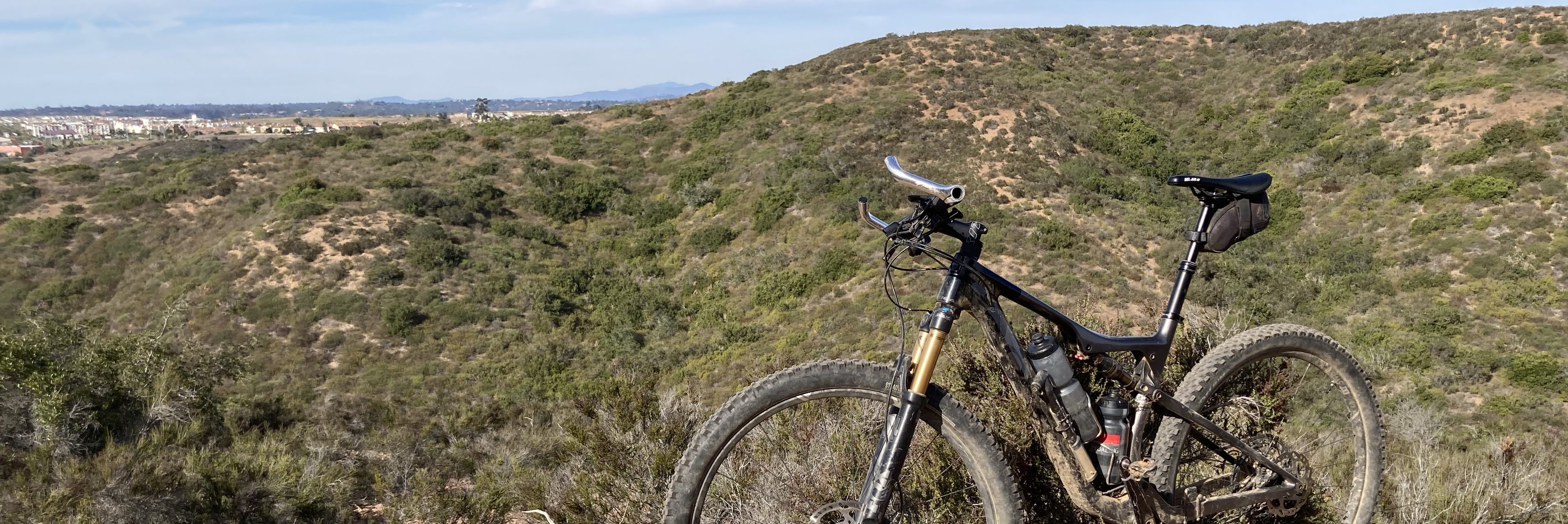My new MTB is marketed as a XC race style bike. The target owner tends to be a weight weenie and, as is typical for the market segment, the bike came with minimalist tires. The rear Maxxis Ikon has very little tread and the front Maxxis Ardent* is only a small step up, with slightly larger side blocks.
The first few rides confirm that while these are fine tires for a racer, there’s too much rear slip and too much front end drift for general riding. I have experience trying to reach the ideal compromise for speed under racing circumstances but am long past playing those games. I looked for what seemed to me to be a more general purpose MTB tire fit for my local conditions and decided on the Maxxis Aggressor.

This shows the difference before swapping the 1.57 lb Ikon EXO for the 2.02 lb Aggressor EXO. Yes, there is indeed a weight penalty.

As you can see the Ardent EXO (1.79 lbs) is only a little bit beefier* than the Ikon and the Aggressor looks like a bigger jump up in grip. For those weight weenies in the class, we’re at a 0.68 lb hit to add grippier tires. This is about the margin you gain from converting the tires to tubeless, btw. I am a little surprised that these tires are so close in weight to the Minions (DHF, DHR II), so those would be good options as well. I had been running the DHF on the front of my 26” wheel hardtail lately and tried the DHR II for a little while on the back. Great tires.

With the Aggressor mounted and inflated it is even clearer how much more tread they offer compared with either the Ikon or the Ardent. These went on easy-peasy with a regular floor pump, making this a 5 for 5 with Maxxis tubeless-ready models in my experience. The only tire I’ve tried that gave me trouble (CO2 required) is the Panaracer Fire XC Pro.

The first ride confirmed the choice. Much improved drive traction (I made sure to test it out on out of saddle climbing) and good front end control. This was true both in higher speed cornering and for looser / steeper descents on the brakes. Running pedaling speed twisties, and the associated flipping from one edge to the other, illustrated high predictability across the entire tread profile. The Aggressors seem to be a good general purpose tire choice.
These are probably a little slower rolling in the straight and level. I didn’t notice anything severe but then again I am still getting used to a full suspension 29”er and those two features likely contribute more to perceived rolling ease than the tires do. Also, I had pumped them up to 60 psi for bead seating purposes and I just left them there. They might drag more at lower tire pressures**….but one of my reasons for putting these on was to avoid dropping tire pressure. That would probably have made the Ardent and Ikon hook up somewhat better but lowering pressure comes at the cost of potential rim damage from rock hits. At my size anyway.
According to readily googled MTB tire pressure advice, it’s absurd to run pressures over 32 psi or so. But then you notice that the advice givers weigh like 160 lbs, run 2.5” tire widths, 33 mm width rims and casually throw out that they have to run an “Insert” in the back tire and “don’t mind” dinging their rim. My weight is considerably in excess of this, I have 25 mm rims, run 2.3” width tires and don’t feel like adding some $$ insert when air pressure is much cheaper. I also am not casual about putting dents in my rim.
*ETA: I realized quite some time later that this is the Ardent Race variant, which seems to have much less tread than the Ardent proper.
**yes I am aware of these theories that low tire pressures are faster because the tire deforms around obstacles.

Aggressor is such a good rear tire. Picked one up used after reading your blog last year. It’s been money in all but really wet conditions and even then not too bad depending on soil type.
What tire did you run up front when you had Aggressor on rear? I have it mounted with a High Roller up front like the combo…
I’ve found this, over the long haul (>18 months), to be a great, standard issue, good old all conditions type of tire. Predictable, capable. Durability has been excellent.
I ran Aggressors front and rear for essentially all of my time with them, save for a brief period of about 3-4 months with a Delium Steady on the front. I am an oldskooler who started MTB riding before there really were front/rear specific tires and a Dart skeptic. Although I did eventually run smoke/dart and directional velociraptors during my long years of minimal/intermittent riding, and a minion dhr II / dhf pair somewhat recently. There are advantages, but I still feel that matched tires have their advantages too.